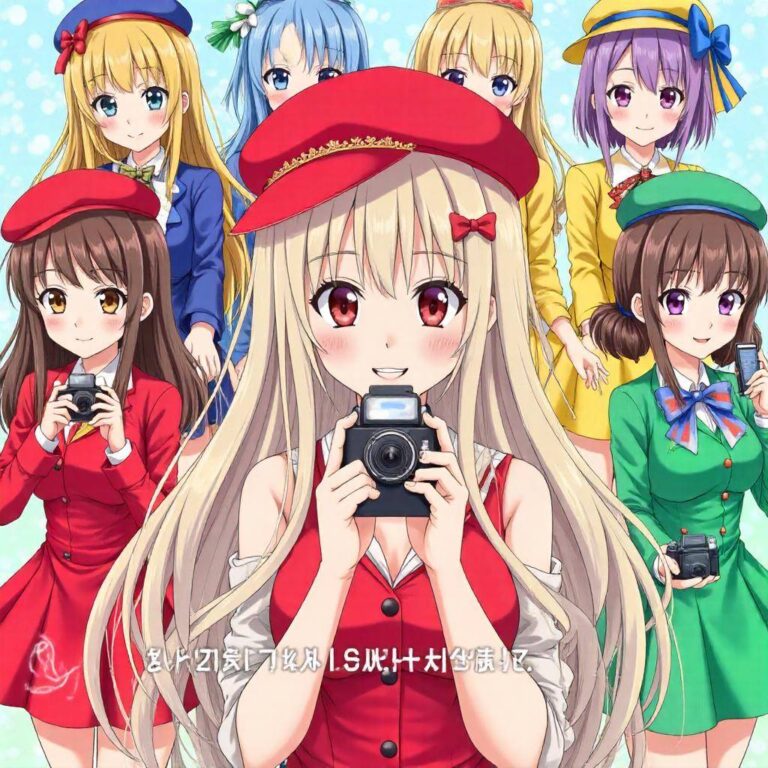Reader’s Question:
I just finished watching “Too Many Losing Heroines,” and I got so hooked that I binge-watched it. Now I feel a bit sad that it’s over… I heard that a second season is in the works, but do you know when it might be released? I can’t wait!
Understanding the
Buzz Around “Too Many Losing Heroines”
When you finish watching a series that has captured your heart, it’s perfectly natural to feel a sense of loss. “Too Many Losing Heroines” has taken the anime community by storm, and if you’ve binge-watched it, you’re not alone. Many fans resonate with the unique blend of humor, drama, and character development that this series offers. The anticipation for a second season is palpable, and while there is no concrete release date yet, discussions around potential timelines are buzzing across social media platforms.
The Current Landscape of Anime Seasons
In the world of anime, it’s quite common for a successful series to be greenlit for a second season. Typically, the wait from the decision to the actual airing can take anywhere from a year to two. For “Too Many Losing Heroines,” based on industry trends, we might be looking at an early release in next spring or potentially waiting until the following year. Of course, this is speculative, but the pattern holds true for many fan-favorite series. Fans are always eager to dive deeper into the worlds and characters they have come to love. With the rise of streaming platforms, it has become easier for shows to gain a following, and “Too Many Losing Heroines” is a prime example. The intersection of comedy and romance, paired with relatable characters, resonates well with audiences on both sides of the Pacific.
Examining the Cultural Significance
The fusion of Japanese and Western comedic influences throughout “Too Many Losing Heroines” presents an interesting cultural dialogue. The series deftly weaves stand-up comedy with the traditional Japanese manzai style. For many viewers, especially those who have lived in both cultures like myself, this blend is a treasure trove of humor. Japanese manzai often employs a rapid-fire exchange of jokes between two characters, while Western stand-up tends to focus more on storytelling and observational humor. Take for example the interactions between the main characters. The banter is reminiscent of classic manzai, where one character plays the “boke” (the funny man) and the other the “tsukkomi” (the straight man). This dynamic creates a rhythm that is not only entertaining but also serves to highlight the characters’ relationships and personal growth. As a person who deeply appreciates the nuances of humor in different cultures, I often find myself laughing out loud at moments where the “boke” attempts to win over their love interest, only to be met with unexpected, often hilarious roadblocks. It’s this vibrant interplay that keeps viewers engaged and laughing.
Character Development Insights
One of the aspects of “Too Many Losing Heroines” that stands out is the depth of character development. Each character is not just a vessel for humor but has an arc that resonates with viewers. As we follow their journey through love and self-discovery, we can see ourselves reflected in their struggles and triumphs. For instance, consider the protagonist who is often caught between pursuing his dreams and dealing with the emotional turmoil of his relationships. This is relatable for many young adults today, juggling responsibilities with personal aspirations. As a dedicated father myself, I understand the balancing act; it’s a universal theme that adds a layer of realism to the narrative. The supporting characters also add richness to the story. Each heroine has her own backstory that explains her motivations and desires. As these characters evolve, viewers are given a chance to reflect on their own experiences with relationships, making the story all the more poignant.
Storytelling Techniques That Captivate
The storytelling approach in “Too Many Losing Heroines” is a beautiful mix of humor and emotional depth. The narrative doesn’t shy away from serious topics, which makes the comedic moments even more impactful. The juxtaposition of humor with heartfelt moments is a technique that keeps the audience on their toes, allowing for a rollercoaster of emotions. One effective storytelling element is the use of flashbacks. These not only provide context for the characters’ current decisions but also allow viewers to connect with their past experiences. For example, in one episode, a character’s previous failed relationship is revisited, and as they confront their past, viewers gain insight into their actions in the present. This technique creates a layered narrative that feels both engaging and authentic. Additionally, the pacing is masterfully handled. Quick punchlines are followed by moments of reflection, allowing viewers to absorb the humor while also contemplating the deeper messages. It’s this balance that makes the series not just entertaining but also meaningful.
Practical Insights for Viewers and Creators
For viewers, the key takeaway from watching “Too Many Losing Heroines” is the importance of relatability in storytelling. When characters reflect our experiences, it cultivates a deeper connection. If you’re looking to explore more anime, keep an eye out for shows that prioritize character development and cultural nuances. Moreover, if you’re a creator, consider the following actionable advice: 1. Focus on Relatable Characters: Develop characters with strengths and flaws that audiences can identify with. This will help them connect emotionally with the narrative. 2. Embrace Cultural Influences: Blend different cultural storytelling techniques to create a unique narrative voice. Whether it’s humor or drama, pulling from various backgrounds can enrich the storytelling experience. 3. Pacing Matters: Finding the right rhythm between humor and seriousness can significantly impact how your story is received. Use moments of levity to balance heavier themes. 4. Utilize Flashbacks Wisely: These can provide context and depth, enhancing the audience’s understanding of character motivations. 5. Engage with Your Audience: As a creator, staying connected with your audience through social media or fan events can help you understand their perspectives and desires for future content.
Reflecting on Anime Culture
Anime culture is vibrant and ever-evolving. As someone who has grown up immersed in both California and Osaka’s diverse landscapes, I find it fascinating to see how anime serves as a bridge between different cultures. The humor in “Too Many Losing Heroines” exemplifies this beautifully, showcasing how laughter transcends language barriers. In my own experiences attending anime conventions and participating in cosplay events, I’ve seen firsthand how dedicated and passionate the community is. Fans come together not just to celebrate their favorite series but to share experiences, laughter, and sometimes even tears. This collective enthusiasm is what keeps the spirit of anime alive and thriving. It’s these shared experiences that make watching shows like “Too Many Losing Heroines” not just a passive activity but an event that brings people together, sparking conversations and forming friendships.
Final Thoughts
As we eagerly await the news of a second season for “Too Many Losing Heroines,” let’s take a moment to appreciate what the series has already brought to the table. Its clever humor, relatable characters, and emotional depth are just a few of the reasons it has captivated many hearts, including my own. Whether you are a seasoned anime fan or just dipping your toes into this vibrant world, there is always something new to discover, and shows like this one remind us why we fell in love with anime in the first place. I encourage you to share your thoughts and experiences with this series or any others you’ve enjoyed. What makes a show resonate with you? Let’s keep the conversation going and celebrate our shared passion for anime!



